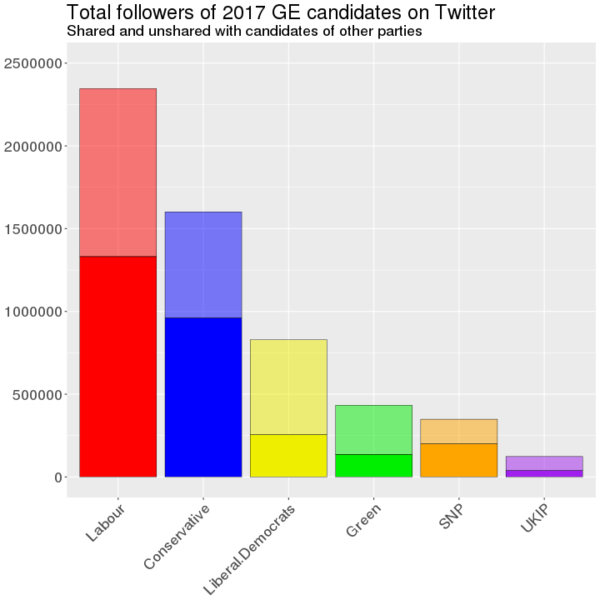It is an article of faith for many on the British Left that measures to combat left wing antisemitism are in reality measures to combat Labour Party leader Jeremy Corbyn: attempts promoted by the fiendish ‘Israel Lobby’, and opposed by Jews. Yes, by Jews. You know the Jews I mean: maybe not the Jews you’ve actually met, but, as Chaminda Jayanetti put it, ‘the Good Jew[s] – the Perfect Jew[s]. The Manic Pixie Dream Jew[s]. The Jew[s] to be put on a placard as evidence of how Not All Jews support Israel.’ There’s a certain kind of Leftist who needs those Jews.
Month: September 2017
Who won the Twitter election? Part ii: ‘faithful’ and ‘promiscuous’ followers
Last month, I published an analysis of candidates’ public Twitter followers immediately before the General Election. As I showed, Conservative candidates tended to have more public followers than Labour candidates — but once we control for whether candidates had or had not previously been Members of Parliament, we find that Labour candidates tended to have more public followers than Conservative candidates. SNP candidates tended to have more public followers than Conservative or Labour candidates, although that finding was not statistically significant after controls because of the low numbers involved.
This does not, however, address the question of which party’s candidates had more public followers in total — nor the much more subtle question of how many of each party’s candidates’ public followers exclusively followed candidates of that party, and how many also followed candidates of other parties. To answer that question, we need to know who the candidates’ followers were. Fortunately, I do:

Continue reading “Who won the Twitter election? Part ii: ‘faithful’ and ‘promiscuous’ followers”